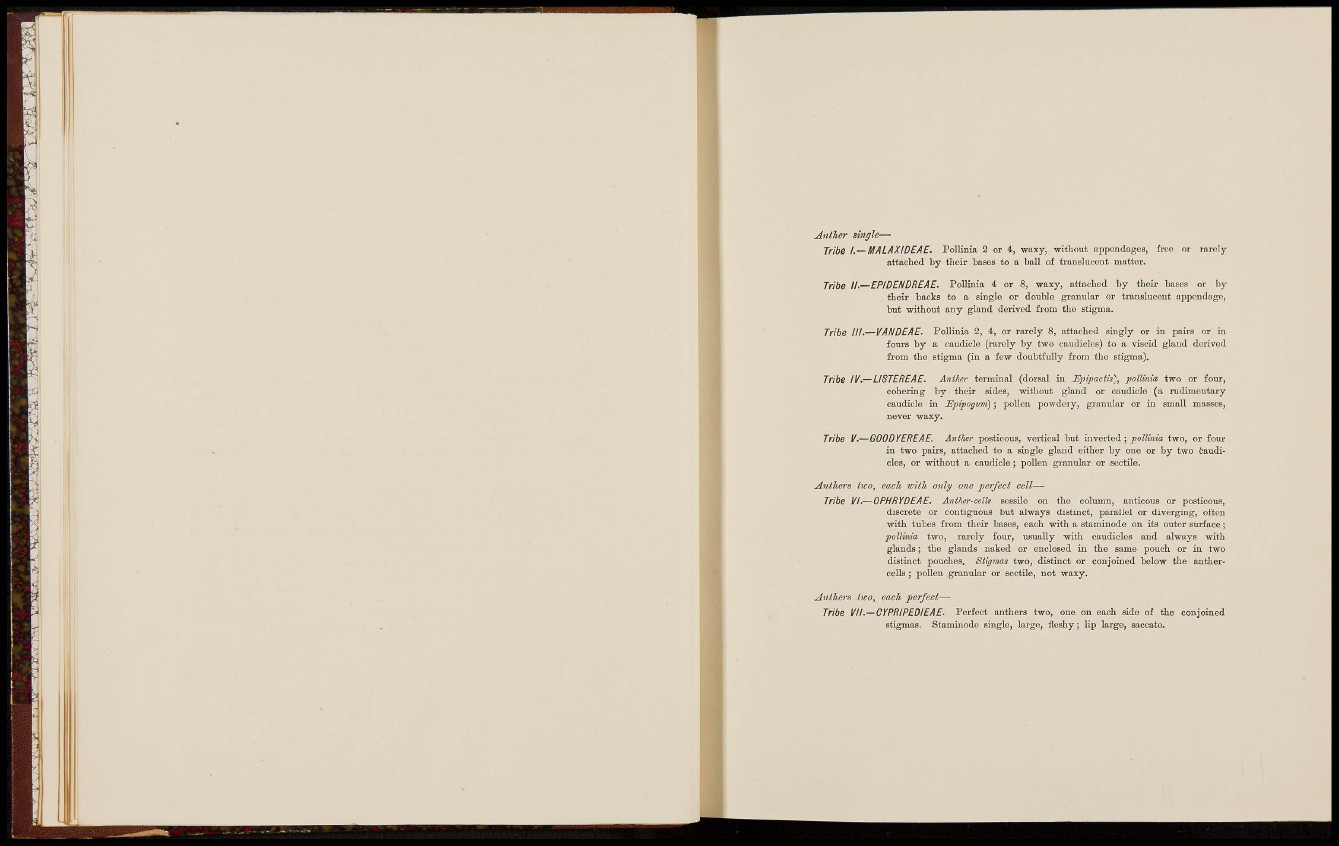
Anther single—
Tribe l.—MALAXIDEAE. Pollinia 2 or 4, waxy, without appendages, free or rarely
attached by their bases to a ball of translucent matter.
Tribe 1I.—EPIDENDREAE. Pollinia 4 or 8, waxy, attached by their bases or by
their backs to a single or double granular or translucent appendage,
but without any gland derived from the stigma.
Tribe Hi.—VANDEAE. Pollinia 2, 4, or rarely 8, attached singly or in pairs or in
fours by a caudicle (rarely by two caudicles) to a viscid gland derived
from the stigma (in a few doubtfully from the stigma).
Tribe IV.—LISTEREAE. Anther terminal (dorsal in Epipaetis), pollinia two or four,
cohering by their sides, without gland or caudicle (a rudimentary
caudicle in Epipogvin); pollen powdery, granular or in small masses,
never waxy.
Tribe V.—GOODYEREAE. Anther posticous, vertical but inverted; pollinia two, or fouiin
two pairs, attached to a single gland either by one or by two Caudicles,
or without a caudicle; pollen granular or sectile.
Anthers two, each with only one pei-fect cell—
Tribe VI.—OPHRYDEAE. Anther-cells sessile on the column, anticous or posticous,
discrete or contiguous but always distinct, parallel or diverging, often
with tubes from theii* bases, each with a staminode on its outer surface;
two, rarely foui-, usually with caudicles and always with
the glands naked or enclosed in the same pouch or in two
distinct pouches. Stigmas two, distinct or conjoined below the anthercells
; pollen granular or sectile, not waxy.
Anthers two, each perfect—
Tribe Vil.— CYPRIPEDIEAE. Perfect anthers two, one on each side of the conjoined
Staminode single, large, fleshy; lip larj